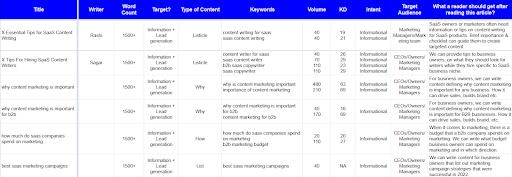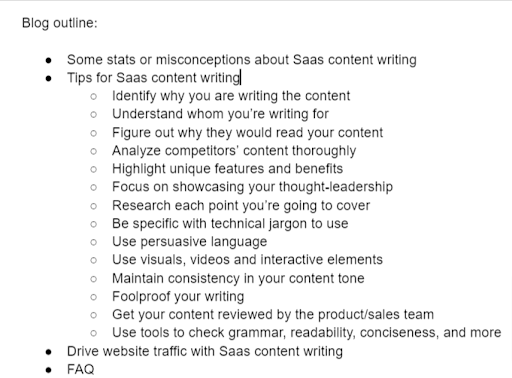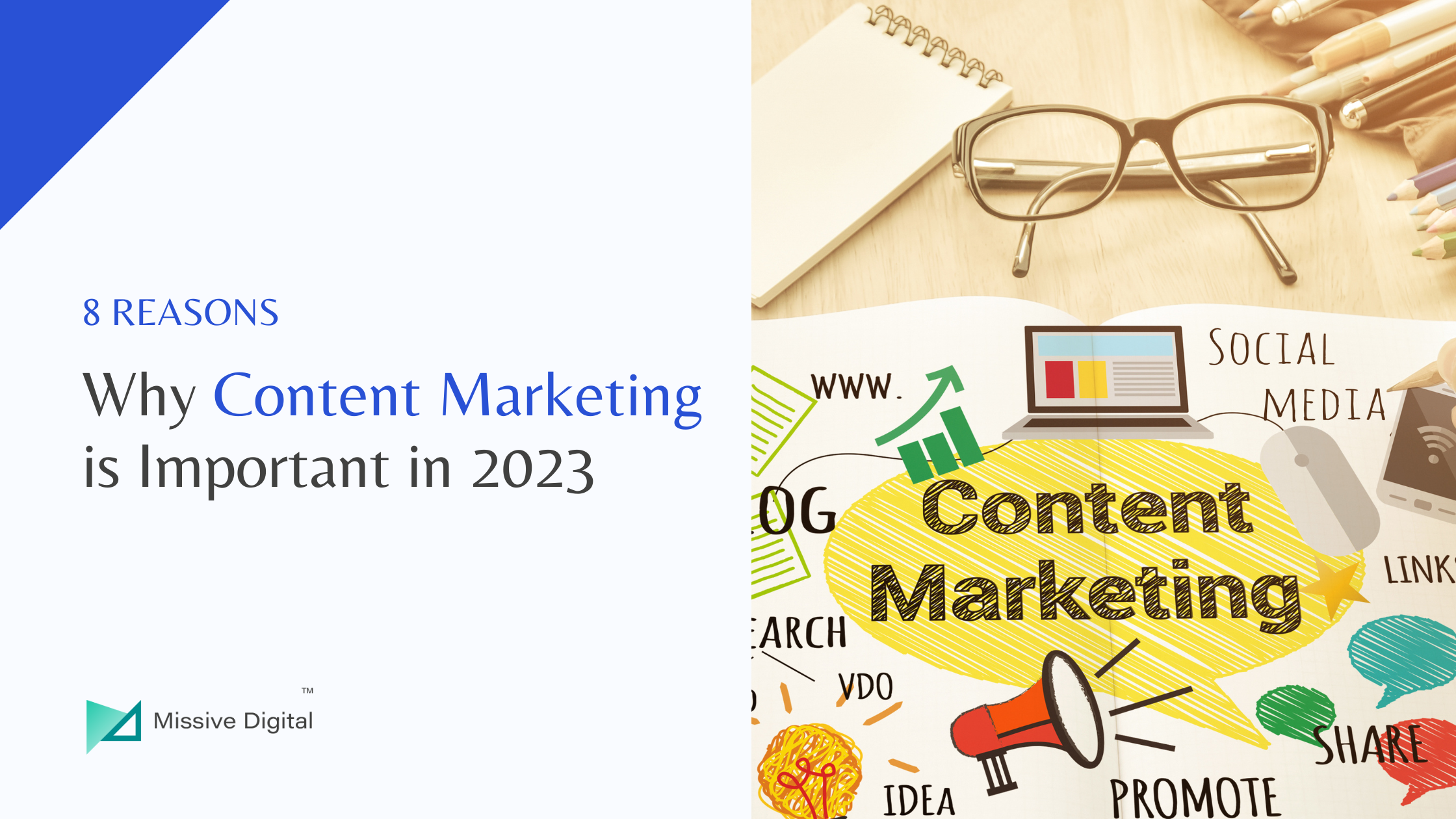According to a recent report by HubSpot, content creation is the top priority for 80% of marketers.
It is because content is the fundamental element of all forms of marketing. Content is the powerhouse of marketing communication, and thus, content marketing is the modern digital marketing trend.
Content marketing is a strategic digital marketing approach that focuses on creating and distributing valuable content to attract, acquire, and engage a large scale of the target audience. Content marketing is not just about creating content that educates or entertains your audience—it’s also about engaging them and inspiring them to take action.
Examples of content marketing can range from website copy, blog posts, videos, infographics, podcasts, ebooks, and case studies.
A successful content marketing strategy will consistently communicate the value of your brand to build trust with the consumers who interact with it. In addition, by providing helpful tips and advice for free, companies can show their expertise in a specific field while demonstrating that they care about their customer’s overall satisfaction.
Why is Content Marketing Essential in 2023?
Marketing via content has been a trend for about a decade. From SaaS software solutions like HubSpot and MailChimp to technology service providers, everyone has benefited from this form of modern marketing.
From the 2023 perspective, here is how content marketing can help you:
1. Increases Brand Awareness and Reach
Content marketing can help brands increase awareness and reach by consistently promoting relevant and valuable content. This can be in the form of blog posts, videos, podcasts, infographics, etc. The more content a company produces, the more opportunities it has to engage with its target audience and drive traffic to its website.
For example, an educational institute that consistently shares tips and advice via blog posts, video tutorials, and social media posts will reach a wider audience, build brand recognition, and increase the likelihood of potential customers searching for and visiting their website.
2. Positions Brands as Thought Leaders
Content marketing can help brands position themselves as experts in their industry or field. They can consistently create and share high-quality, educational, and informative content that demonstrates a deep understanding of the subject matter. This type of content can be in the form of blog posts, whitepapers, case studies, videos, podcasts, webinars, etc.
For example, a software company that regularly publishes articles and videos about the latest technology trends and best practices in its field can be perceived as a thought leader and expert in the industry. This helps to establish customer trust and credibility, making them more likely to choose the company for their software needs.
Read Case Study: See how we helped a SaaS talent platform achieve a 315% increase in organic traffic via content marketing.
3. Builds Relationships with Target Audience
Content marketing helps build relationships with the target audience by providing value through relevant and informative content. By creating content that addresses their customers’ needs, interests, and pain points, brands can engage with their audience and establish a connection with them.
This connection is strengthened over time as the brand continues to provide value through its content. By consistently delivering high-quality content, brands are able to establish trust and credibility with their audience, which leads to stronger relationships and increases brand loyalty.
For example, a fashion brand that consistently shares styling tips and trend reports on its social accounts is not only providing valuable information to its target audience but also establishing itself as a trusted source for fashion advice. This can lead to a loyal following and increased engagement with the brand.
Similarly, a food brand that regularly shares recipes and cooking tips on its social media channels can build a relationship with its target audience by providing them with valuable information and inspiration for meal planning.
4. Drives Traffic and Leads to Website
Content marketing can help bring traffic to a website by offering informative content that people want to consume, share, and engage with. By creating and distributing content optimized for search engines, brands can increase their visibility and attract organic traffic to their website.
For example, a fitness brand can create blog posts that provide detailed reviews of the latest health products or offer fitness tips. These blog posts can be optimized for relevant keywords, making it easier for people searching for information on fitness topics to find the brand’s website via Google. Additionally, the brand can promote its blog posts on social media and other channels to reach a wider audience and drive traffic to its website.
Another way to use content marketing to drive traffic to a website is by creating and promoting content offers, such as e-books, webinars, or email courses. These offers provide a value proposition for the target audience and incentivize them to exchange their contact information for access to the content. This allows the brand to capture leads and drive traffic to its website.
5. Improve Search Engine Rankings
Content marketing can improve a website’s search engine ranking by publishing relevant, high-quality, and keyword-optimized content on it. This helps search engines understand what a website is about and increases its relevance to users searching for those keywords.
For example, let’s say a technology company wants to improve its search engine ranking for the keyword “agile transformation challenges.” To do this, they could create blog posts that provide 360-degree information on agile and the challenges businesses face. By including different variations of the keyword “agile transformation challenges” in the title, URL, and throughout the content, the brand can signal to search engines that this is the main topic of the page. Additionally, by using other relevant keywords, such as “Scrum,” “Waterfall,” and “Sprints” in their content, the brand can help search engines understand the broader context of the content and increase its relevance for related searches.

By consistently creating and publishing high-quality, optimized content, the brand can build authority and relevance in search engines’ eyes, leading to improved search engine ranking over time. This increased visibility can lead to more organic traffic and increased opportunities for engagement with the target audience.
6. Generating Higher Conversions and Sales
With content marketing in place, companies can set up nurturing sequences using content to educate prospects and retain customers. Educating prospects on the organization’s capabilities, resources, and customer successes will show the value of your product or service and increase the probability of turning a lead into a sale. Here, building long-term relationships with customers is key to driving customer retention and loyalty; offering helpful content and resources builds trust and loyalty, resulting in increased conversions.
In fact, according to recent research, in 2022, 55% of B2B buyers will rely more on content as compared to 2021. It looks like this trend will continue to grow.
For example, a home goods store can create content such as buying guides and product comparisons that help shoppers make informed decisions when shopping for home goods. By providing valuable information through their content, businesses can establish trust and credibility with their prospects, making them more likely to choose their products or services.
In addition, content marketing can also help businesses to move their audience through the sales funnel by providing targeted content at each stage of the customer journey. For example, a business can create top-of-the-funnel content, such as blog posts or e-books, to attract and educate potential customers. As these customers move further down the funnel, the business can provide more targeted content, such as case studies or product demos, to persuade them to make a purchase.
7. Content Marketing is Cost-effective Compared to Traditional Advertising
Content marketing is a cost-effective way to reach and engage with customers compared to traditional advertising methods because it focuses on creating valuable, informative content that attracts and retains a clearly-defined audience.
In fact, businesses that have a blog receive 55% more website visitors, 97% more inbound links, and 434% more indexed pages.
Content marketing costs significantly less than traditional advertising methods such as TV commercials, print ads, and billboards. Content marketing generates about three times more leads and costs 62% less than traditional marketing.
It is because the cost of producing and distributing content such as blog posts, infographics, videos, and social media posts is significantly lower than the cost of traditional advertising methods.
Additionally, content marketing can generate long-term results. For example, a blog post can generate traffic for months or even years after it is published, unlike paid advertising campaigns, which usually have a limited lifespan.
8. Adds Value to the Product
Content can help customers get the most out of a product by providing helpful and informative content that allows them to use it in the best way possible.
For example, SaaS companies can use content to educate customers on how to use the latest features, provide in-depth insight into the thinking behind certain products, and create attractive visuals that demonstrate the value of their products.
Also, D2C companies such as jewelry brands can create video lookbooks featuring models wearing their newest collection or provide shopping guides.
Take a look at how Netcarat is helping its customers by sharing shopping guides:

By showcasing what makes their product unique and useful, companies help customers maximize its benefits. In addition, by offering valuable content that is tailored to customer interests and needs, companies build trust in their brand and increase customer satisfaction.
How Can You Create a Content Marketing Plan for Your Business?
Here is a blueprint for how you can create your content marketing plan:
1. Define your target audience: Identify who your target audience is, including their needs, pain points, and what motivates them. This information will help you create content related to your ideal customer profile. It’s recommended to create buyer’s personas to get started.
2. Determine your goals: Determine what you want to achieve with your content marketing plan. Your goals could be to increase brand awareness, generate leads, or improve customer engagement.
3. Conduct a content audit: Review the content you have already created, and identify what has worked well and what hasn’t. This will help you make informed decisions about what types of content to create in the future.
4. Choose your channels: Decide where you will publish your content, such as your blog, social media, email marketing, or other platforms. Consider where your ideal customers spend their time online and choose the channels that are most relevant to them.
5. Plan your content calendar: Map out what content you will create, when you will create it, and how often. This will help you stay organized and ensure that you are consistently publishing content.

6. Create a content brief: For each piece of content you create, write a brief that outlines the topic, format, target audience, and goals. This will help ensure your content is focused and aligned with your content marketing plan.

7. Measure and refine your plan: Regularly measure the success of your content marketing plan and make adjustments as needed. This will help you continuously improve your plan and achieve your goals.
Bottom Line - Content is the Backbone of Your Marketing Efforts
In a nutshell, content marketing is a critical aspect of modern marketing. By creating valuable and relevant content that addresses your target audience’s needs and pain points, you can build trust, drive engagement, and ultimately generate profitable customer action.
So, irrespective of your business size, investing in content marketing can help you reach your marketing goals cost-effectively and measurably.
As technology continues to evolve and consumers become more discerning, content marketing will only become more important. So, create a solid content marketing plan, implement it consistently, and track your results to see the impact it can have on your business.


